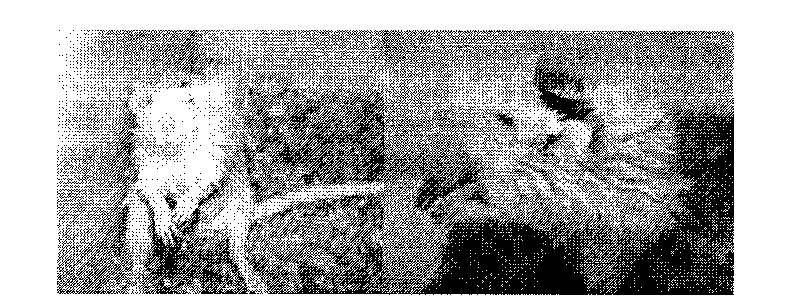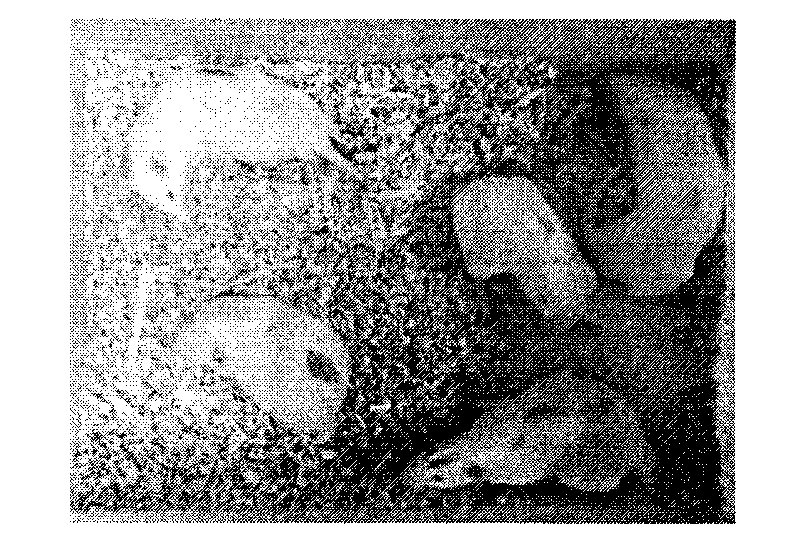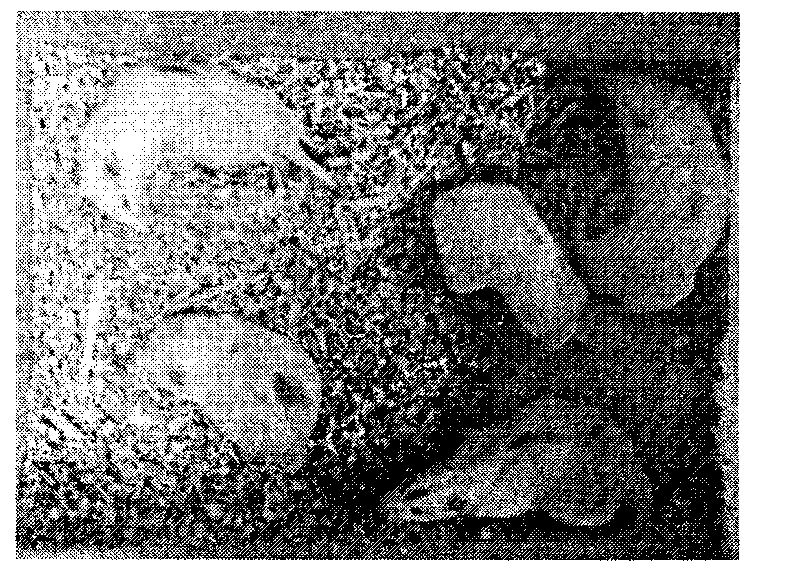Method for manufacturing animal model of qi-deficiency and blood-stasis disease and evaluation method thereof
An animal model and production method technology, which is applied in the fields of drug devices, other medical devices, animal husbandry, etc., can solve the problem that the model evaluation system lacks quantitative and standardized macro and micro diagnostic standards, poor experimental feasibility, and it is difficult to meet the requirements of animal models. And other issues
- Summary
- Abstract
- Description
- Claims
- Application Information
AI Technical Summary
Problems solved by technology
Method used
Image
Examples
Embodiment 1
[0088] Animal grouping: 36 healthy male SD rats with a body weight of (200 ± 20) g were purchased from Weitong Lihua Company, and were randomly divided into 3 groups: blank control group (8 rats), fed normally for 22 days; simple MCAO control group ( 12 rats) were fed for 3 weeks, followed by thread embolization for 2 hours of ischemia and reperfusion for 8 hours; in the compound model group (16 rats), continued exhaustive swimming for 3 weeks, then thread embolization for 2 hours of ischemia and then 8 hours of reperfusion.
[0089] Qi deficiency syndrome modeling method: the normal group does not swim; the compound model group swims adaptively after swimming for 2 days (adaptive swimming is not included in the modeling time), and begins formal continuous swimming for 21 days, bearing weight (8% of body weight) every day Swim once, 5-10 minutes a day, for 3 weeks.
[0090] Swimming conditions:
[0091] Swimming pool: diameter 150cm, height 50cm, water depth 40cm;
[0092] W...
Embodiment 2
[0107] Animal grouping: 36 healthy male SD rats with a body weight of (200 ± 20) g were purchased from Weitong Lihua Company, and were randomly divided into 3 groups: blank control group (8 rats), fed normally for 22 days; simple MCAO control group ( 12 rats) were fed normally for 4 weeks, followed by thread embolization for 4 hours of ischemia and reperfusion for 20 hours; compound model group (16 rats), continued exhaustive swimming for 4 weeks, then thread embolization for 4 hours of ischemia and then 20 hours of reperfusion.
[0108] Qi deficiency syndrome modeling method: the normal group does not swim; the compound model group swims adaptively after swimming for 2 days (adaptive swimming is not included in the modeling time), and begins formal continuous swimming for 21 days, bearing weight (4% of body weight) every day Exhausted swimming 1 time, 5-20 minutes a day, a total of 3 weeks of swimming.
[0109] Swimming conditions:
Embodiment 3
[0131] Animal grouping: 36 healthy male SD rats with a body weight of (200 ± 20) g were purchased from Weitong Lihua Company, and were randomly divided into 3 groups: blank control group (8 rats), fed normally for 22 days; simple MCAO control group ( 12 rats), normal feeding for 3 weeks, suture embolization for 1h and reperfusion for 8h; composite model group (16 rats), control food intake, and oral propranolol (1mg / kg), continuous exhaustive swimming for 4w, then suture embolization 1 hour of ischemia and 8 hours of reperfusion.
[0132] Qi deficiency syndrome modeling method: the normal group does not swim; the composite model group swims adaptively after swimming for 2 days (adaptive swimming is not included in the modeling time), and begins formal continuous swimming for 21 days, bearing weight (6% of body weight) every day Swim 1 time exhaustively, 5-10 minutes a day, and swim for 2 weeks in total.
[0133] Swimming conditions:
PUM
 Login to View More
Login to View More Abstract
Description
Claims
Application Information
 Login to View More
Login to View More - R&D
- Intellectual Property
- Life Sciences
- Materials
- Tech Scout
- Unparalleled Data Quality
- Higher Quality Content
- 60% Fewer Hallucinations
Browse by: Latest US Patents, China's latest patents, Technical Efficacy Thesaurus, Application Domain, Technology Topic, Popular Technical Reports.
© 2025 PatSnap. All rights reserved.Legal|Privacy policy|Modern Slavery Act Transparency Statement|Sitemap|About US| Contact US: help@patsnap.com



